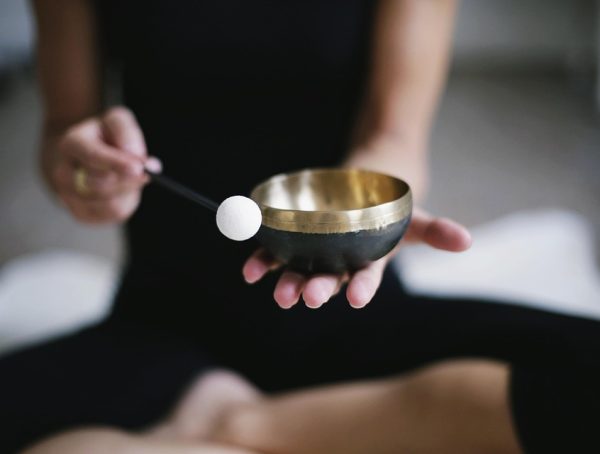Scripts for Mindfulness Meditation: Unlocking the Power of Presence
In a world filled with distractions, noise, and the constant pull of our responsibilities, finding moments of peace can feel nearly impossible. Mindfulness meditation offers a sanctuary amidst the chaos. It cultivates a deep connection with the present moment, allowing us to experience life as it is, rather than how we wish it to be or how we fear it could be. By incorporating scripted mindfulness meditation into your daily routine, you can unlock the power of presence and significantly enhance your overall well-being.
Understanding Mindfulness Meditation
Mindfulness meditation originates from ancient contemplative practices, particularly within Buddhism. At its core, it encourages individuals to focus their attention on the present moment in an open, non-judgmental way. This practice involves becoming aware of your thoughts, feelings, and bodily sensations without trying to change them.
Benefits of mindfulness meditation include:
- Improved emotional well-being: Regular practice can help reduce anxiety, depression, and stress by fostering a greater understanding of your thoughts and feelings.
- Enhanced focus and concentration: Mindfulness meditation trains your brain to focus better, leading to improved productivity and better decision-making.
- Increased self-awareness: By taking a step back from your thoughts, you can gain valuable insights into your motivations and behaviors.
With these advantages in mind, using scripted meditations can facilitate your practice, especially if you’re a beginner.
How to Create a Mindfulness Meditation Script
A mindfulness meditation script functions as a guideline to help you navigate your session. Here’s a simple outline to create your own script:
1. Set the Intention
Start by setting a clear, purposeful intention for your meditation. This could be about inviting peace, cultivating gratitude, or simply being present. For example:
“Today, I invite stillness and peace into my mind.”
2. Bring Awareness to the Breath
Encouraging deep, mindful breathing is foundational in mindfulness meditation. Guide yourself or your listeners through a breathing exercise:
“As you settle into a comfortable position, gently close your eyes. Take a deep breath in through your nose, feeling your stomach expand. Hold for a moment. Now, release the breath through your mouth, letting any tension flow out of you. Repeat this for a few moments, allowing each breath to bring you deeper into relaxation.”
3. Body Scan
A body scan helps ground you in the present moment.
“Notice any sensations in your body. Start from the tips of your toes and slowly move up to the crown of your head. Bring your awareness to each part of your body. Notice any areas of tension or tightness. As you breathe, imagine sending your breath to these areas, inviting relaxation.”
4. Observation of Thoughts
Encouraging a non-judgmental observation of thoughts can be liberating.
“Thoughts will come and go, much like clouds drifting across the sky. Acknowledge them as they arise and gently guide your attention back to your breath. Remember, it’s okay to think; just notice the thoughts without attaching to them.”
5. Closing the Session
End your session by inviting gratitude and reaffirmation of your intention.
“When you feel ready, take a few more deep breaths. Gently bring your awareness back to the room. Wiggle your fingers and toes, stretch if you feel like it. Before opening your eyes, take a moment to express gratitude for this time you dedicated to yourself. Remember this feeling of presence and take it with you as you continue your day.”
Action Steps for Practicing Mindfulness Meditation
To effectively incorporate mindfulness meditation into your life, consider these action steps:
-
Create a Dedicated Space: Find a quiet place in your home where you can meditate regularly. This helps signal to your brain that it’s time to focus.
-
Set a Regular Time: Consistency is key. Consider meditating at the same time each day – perhaps in the morning to set the tone for your day, or in the evening to wind down.
-
Utilize Scripts: Use the script outlined above or find other guided scripts online. You can also record yourself if you prefer an audio guide.
-
Start Small: If you’re new to meditation, start with just five minutes a day. Gradually increase the duration as you become more comfortable with the practice.
-
Join a Community: Consider participating in a local mindfulness group or online forum. Engaging with others can offer support and encouragement on your mindfulness journey.
- Be Patient: Mindfulness is a skill that takes time to develop. Allow yourself grace and patience as you practice.
Conclusion: Embrace the Power of Presence
Mindfulness meditation can be a transformative practice that leads to increased presence, balance, and joy in your life. By utilizing scripts, you can enhance your experience, providing structure and guidance to your meditation sessions.
As you embark on this journey towards mindfulness, remember that every effort counts. Each moment you dedicate to mindfulness meditation adds to your overall well-being and equips you to navigate the stresses of life with grace and resilience.
As you close your eyes and breathe deeply, remind yourself of the profound capability you have to tap into the power of the present moment.
“The mind is everything. What you think you become.” – Buddha
If you enjoyed this article and would like more insights related to mindfulness and wellness, consider following Kevin on Instagram @KSteineman for daily inspiration and tips!
You might also like
More from Meditation
The Role of Mantras in Transcendental Meditation: A Deep Dive
The Role of Mantras in Transcendental Meditation: A Deep Dive Transcendental Meditation (TM) has garnered a significant following across the globe, …
The Science Behind Meditation: Improving Mental Health Naturally
The Science Behind Meditation: Improving Mental Health Naturally In today's fast-paced world, the pursuit of mental wellness has become paramount. Thousands …
Understanding the 7 Types of Meditation for Beginners
Understanding the 7 Types of Meditation for Beginners: A Path to Inner Peace Meditation has become a popular practice in recent …

































